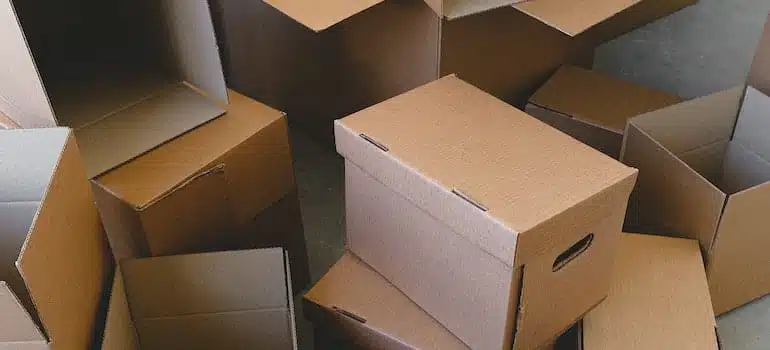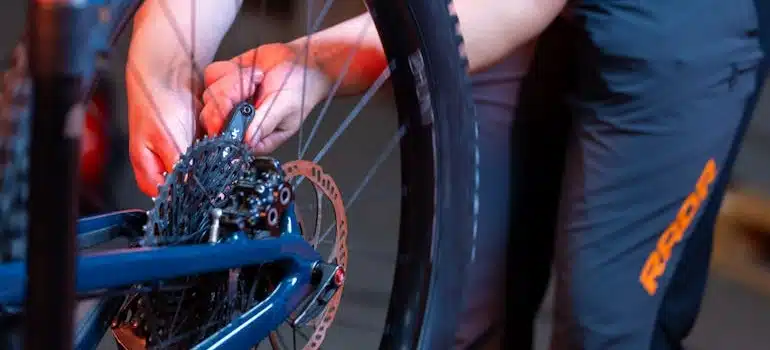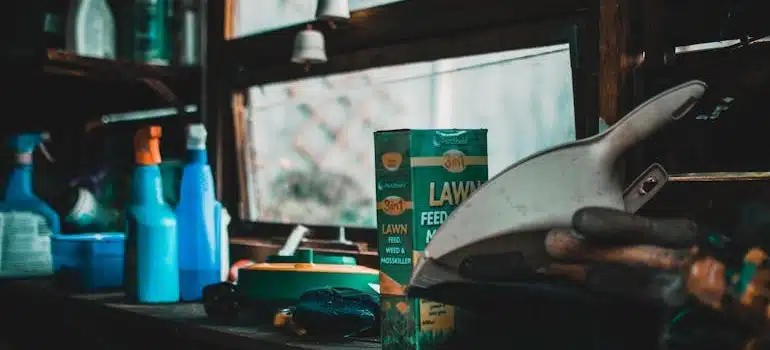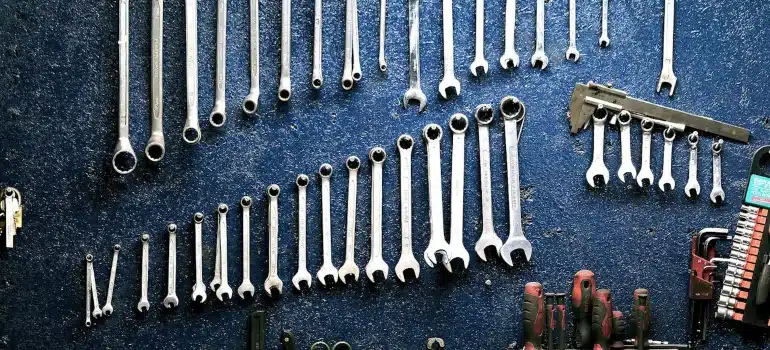How to pack a garage?
Preparing to pack a garage can be one of the most challenging parts of a move due to the variety of items stored there. Each item requires special attention, from car-related tools to gardening supplies, outdoor gear, and seasonal decorations. In this Pro Movers Miami guide, we’ll help you get your garage in “move-ready” condition, one packed box at a time. Let’s shovel through the clutter and get your garage packed and ready for the road ahead!
Step 1: Sort and organize your garage items
Before you start packing, it’s essential to get your garage organized. A cluttered garage can make the packing process more difficult, so take some time to sort through everything. Start by deciding what to keep, donate, sell, or throw away. Decluttering your garage will reduce the number of items you need to pack and make your move smoother and more affordable.
Here’s how to effectively sort and organize your items before you begin to pack a garage:
- Declutter first: Take inventory of everything in your garage. Set aside anything you no longer need or use. Consider donating items in good condition, selling things that have value, and throwing away anything broken or outdated.
- Group similar items together: Categorize items by type. For example, gather all your gardening tools, car-related items, seasonal decorations, and outdoor gear in separate piles. It makes it easier to know what you have and helps you pack more efficiently.
- Create separate zones: If your garage is large, consider creating designated areas or zones for each category of items. This will help you keep everything organized during the packing process.
- Check for expired or hazardous materials: Inspect your garage for any chemicals, paints, or other hazardous materials. These will need special attention, and some may not be allowed to be moved. Dispose of them according to local regulations.
You’ll save time and ensure you’re only packing the items that matter by sorting and organizing before packing. Now, let’s move on to gathering the right packing materials.

Step 2: Gather packing materials
Before you start packing, you need to gather the right materials to ensure everything is protected during the move. Using proper packing supplies will help you keep your garage items organized and secure throughout the journey.
Here’s a list of essential materials you’ll need:
- Boxes: Choose sturdy medium and large boxes for most of your garage items. Make sure they’re not too large or heavy, as they can become difficult to carry and risk breaking. For smaller items, use smaller boxes to avoid overpacking.
- Packing paper & bubble wrap: Use packing paper to wrap fragile items like glass jars, decorations, or smaller garden tools. For extra protection, wrap delicate items in bubble wrap. This will help prevent breakage and damage.
- Plastic bins: These are perfect for storing items that are sensitive to moisture, like camping gear, garden supplies, or seasonal clothing. They are sturdy, stackable, and can help protect your belongings from dirt or moisture.
- Moving blankets & pads: For large, bulky, or heavy items like lawnmowers, bikes, or power tools, moving blankets and pads provide cushioning and prevent scratches or dents. Wrap these items securely to avoid damage during transport.
- Tape: Use high-quality packing tape to seal boxes and reinforce the bottom and top seams. A tape dispenser can help make this process quicker and more efficient.
- Stretch wrap: Ideal for bundling items together like tool sets or securing loose parts of large items such as lawnmowers or bikes. Stretch wrap helps to keep everything together and organized.
- Markers & labels: Label each box with its contents and the category (e.g., “gardening tools” or “holiday decorations”). Clear labeling will make it easier to find items later when unpacking.
Once you have all the necessary packing materials, you’re ready to begin packing your garage items efficiently and securely.
Step 3: Disassemble large and bulky items
Before you start to pack a garage with large and bulky items, disassembling is essential. It will help you save space and prevent damage during the move. Here’s how to handle the disassembly of some common garage items.
How to disassemble bikes for moving
Start by removing the pedals from the bike. This will make it more compact and prevent them from getting damaged. Next, turn the handlebars parallel to the frame to save space. If possible, deflate the tires to make packing easier. Once disassembled, place the bike in a padded bike box or wrap it in blankets for added protection.

How to disassemble outdoor furniture
For modular outdoor furniture, begin by removing cushions and storing them in large plastic bags or bins. It will keep them clean and dry. After disassembling, wrap each piece with moving blankets or furniture pads to prevent scratches and dents. For particularly large furniture, consider shrink wrapping the pieces for additional protection.
How to disassemble lawnmowers and power equipment
Lawnmowers, snow blowers, and other gas-powered equipment should have their fuel drained before packing. This ensures that no gasoline or oil spills during the move. Once the gas is drained, detach the handles and any removable parts, such as the grass catcher or blades.
That reduces the size of the item and makes it easier to pack. Use moving blankets to wrap these items, ensuring they are fully protected from scratches and bumps.
How to disassemble shelving units
Shelving units in your garage can take up a lot of space when moving. Begin by removing any shelves and brackets. Store screws, nails, and other small parts in clearly labeled plastic bags. This will help you keep everything organized and prevent parts from getting lost.
Once disassembled, pack the larger parts of the shelving unit, such as the frame or side panels, in large moving boxes and wrap them with padding or blankets to avoid any damage.
Step 4: Packing various garage items
Now that you’ve sorted, organized, and disassembled, it’s time to tackle the packing of your garage items. Each category of items requires different techniques to ensure they stay safe during the move. Let’s look at how to efficiently pack a garage with specific types of items.

Packing car-related items
When you’re preparing to move your garage tools, knowing how to pack tools for moving is crucial. Begin by organizing your hand tools and power tools into sturdy toolboxes.
Heavy-duty items should go into larger boxes with extra padding to prevent any movement. For smaller tools or parts, such as nails, screws, or bolts, make sure they’re categorized and labeled clearly to avoid confusion during unpacking.
Packing gardening tools and supplies
If you’re wondering how to pack garden tools for moving, the first step is to clean and dry them to prevent rust. Small hand tools like pruning shears or trowels should be packed in sturdy boxes, while larger tools like rakes and shovels fit perfectly in large plastic bins. You can use bubble wrap or moving blankets to ensure everything stays protected during the journey.
Packing seasonal items
When moving seasonal items, including snow shovels or patio furniture, it’s important to know how to pack shovels and rakes for moving. These tools can easily be damaged if not properly packed.
Wrap rakes and shovels in moving blankets or bubble wrap, and place them in large boxes or bins to protect their handles and blades. For other seasonal items like Christmas decorations, use boxes with compartments to prevent breakage.
Packing outdoor and sports equipment
When packing outdoor and sports equipment, it’s crucial to ensure everything is secure and protected during transit.
Bikes
To pack bikes for moving, start by removing the pedals and deflating the tires to save space and prevent damage. Once disassembled, place the bike in a padded bike box or wrap it with moving blankets. If you don’t have a box, secure smaller parts like pedals and handlebars with stretch wrap to keep them together.
Camping gear
For camping equipment, tightly roll up tents, sleeping bags, and camping chairs to minimize space. As you prepare to pack your camping gear, keep in mind that everything must be dry and organized. Smaller items such as lanterns or flashlights should go in labeled boxes to keep them grouped.
Sports equipment
To pack sports equipment, wrap bats, fishing rods, and other gear in bubble wrap or towels for added protection. Pack smaller items, like baseballs and tennis rackets, in boxes with sufficient padding inside to prevent movement and damage.

Packing hazardous materials
Packing hazardous materials requires careful handling to ensure safety during the move. Many moving companies have strict rules regarding these items, so always contact your chosen movers to check their policies. Here’s the best approach to packing them if you move them by yourself.
Paint and chemicals
Paints and cleaning chemicals often can’t be moved by most moving companies due to safety regulations. If you must move these items, be sure they are securely sealed in plastic containers and clearly labeled. Dispose of any items that aren’t allowed by local regulations.
Propane tanks
If you’re moving items like grills, ensure you remove the propane tanks beforehand. Some moving companies do not transport propane tanks due to safety concerns. If yours won’t allow them, make alternative arrangements for disposal or storage before the move.
Batteries
Packing batteries for moving requires careful organization. Store large batteries, such as those used in vehicles or lawn equipment, in leak-proof containers to avoid leakage. Smaller batteries should be packed in sealed bags or containers to prevent corrosion and damage to other items.
Packing seasonal items
Seasonal items, from holiday decorations to winter gear, often need special attention to keep them safe and organized. Here’s how to handle these items during the move.
Holiday decorations
Use boxes with compartments to protect fragile ornaments and decorations. Wrap breakable items like glass ornaments and wreaths in packing paper or bubble wrap. Larger items, such as inflatable yard decorations, should be packed in plastic bins to prevent damage and keep them compact.
Winter gear
Snow shovels, ice scrapers, and winter boots should be packed in large plastic bins to keep them dry and protected. Bulky winter clothes can be vacuum-sealed to save space, making it easier to pack them without taking up too much room.
Patio furniture
Disassemble any modular patio furniture before packing. For larger items, like tables or chairs, wrap them in moving blankets or furniture pads to prevent scratches and dents. Keep cushions clean and dry by storing them in plastic bags or bins.

Packing miscellaneous and household items
Your garage may store other miscellaneous household items that need proper packing to avoid damage. Here’s how to pack these items:
Old furniture
Whenever packing furniture stored in your garage, such as chairs, tables, or bookshelves, disassemble them if possible to reduce their size. Wrap each piece in moving blankets or padded covers to prevent scratches. Place screws and small parts in labeled plastic bags to keep them organized.
Storage bins
Many garages house extra clothing, paperwork, or sentimental items in bins. Label each bin clearly so you know what’s inside. Opt for clear plastic bins for easy identification without opening them. Adding packing paper or bubble wrap inside will help prevent shifting during the move.
Step 5: Label and inventory everything
Labeling your garage items properly is key to a smooth move. Here are the essential tips for effective labeling:
- Label each box: Mark each box or bin with its contents (e.g., “gardening tools,” “holiday decorations”).
- Use large, readable labels: Ensure labels are visible from different angles to avoid confusion.
- Color code: Use different colored tape or labels for easy identification, such as blue for outdoor items and red for fragile items.
- Create an inventory: Keep a written list or use an inventory template to record what’s in each box, especially for high-value or fragile items.
Proper labeling ensures easy access and helps prevent confusion when unloading and unpacking.
Time to tackle packing your garage for the move!
Now that you know how to pack a garage efficiently, from sorting and organizing to packing specific items like tools and seasonal gear, you’re all set for a smooth move. Following these packing tips will ensure you avoid common packing mistakes and everything stays secure and organized, making your move hassle-free. Get started today and make your garage packing process a breeze!
